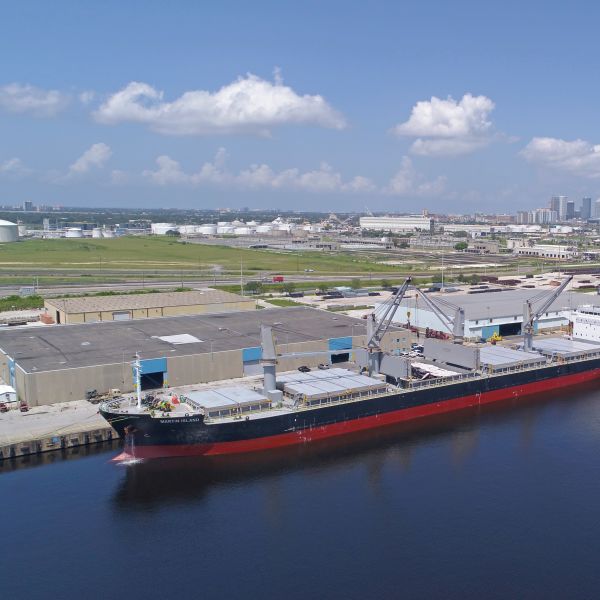Florida's Largest and Most Cargo Diverse Port
Our Mission
Port Tampa Bay will be recognized as a leader in the maritime industry. Port Tampa Bay will have a customer driven, strategic business focus in working with stakeholders to develop and manage marine terminals and supporting infrastructure for the benefit of the regional economy. Port Tampa Bay will employ sound financial, business and environmental management practices in fulfilling its mission.



Port Facts
33 million tons of cargo a year, 5000 acres
Huge & expanding local market
Major shipyard-ship repair center
Major cruise homeport
Major fertilizer export port
Diverse mix of bulk, break-bulk & containers
Energy products gateway for Central Florida
Expanding container gateway for distribution centers & manufacturers
Fitch 'A' Rating & Stable Outlook due to diverse portfolio and solid financial standing
Over $17B in economic impact supporting more than 85,000 jobs in Central Florida
Our Capabilities
Containers
Refrigerated
Tampa Bay FTZ
Environmental
Safety & Security
Breakbulk Capabilities
Bulk Commodities
Automobiles
Cruise
Real Estate
There has never been a better time to cruise from Port Tampa Bay. Port Tampa Bay works closely with our cruise line partners, service providers and government agencies to establish protocols to ensure a safe and healthy environment for the return of cruising to Tampa. It cannot be denied that Port Tampa Bay is a consistent source of vacation travelers seeking exotic locations. Excellent terminal facilities; close proximity to numerous Caribbean destinations; proximity to one of the country's top-rated airports; and a host of popular tourist attractions are some of the reasons Port Tampa Bay is a favorite point of departure for cruise vacationers. Not to mention, passengers can also enjoy an exceptional experience on the front or back end of their cruise vacations--with Tampa Bay's vibrant nightlife, white sand beaches, outdoor activities, museums, restaurants, and proximity to six of the top ten theme parks in the nation, there is no shortage of things to see and do.